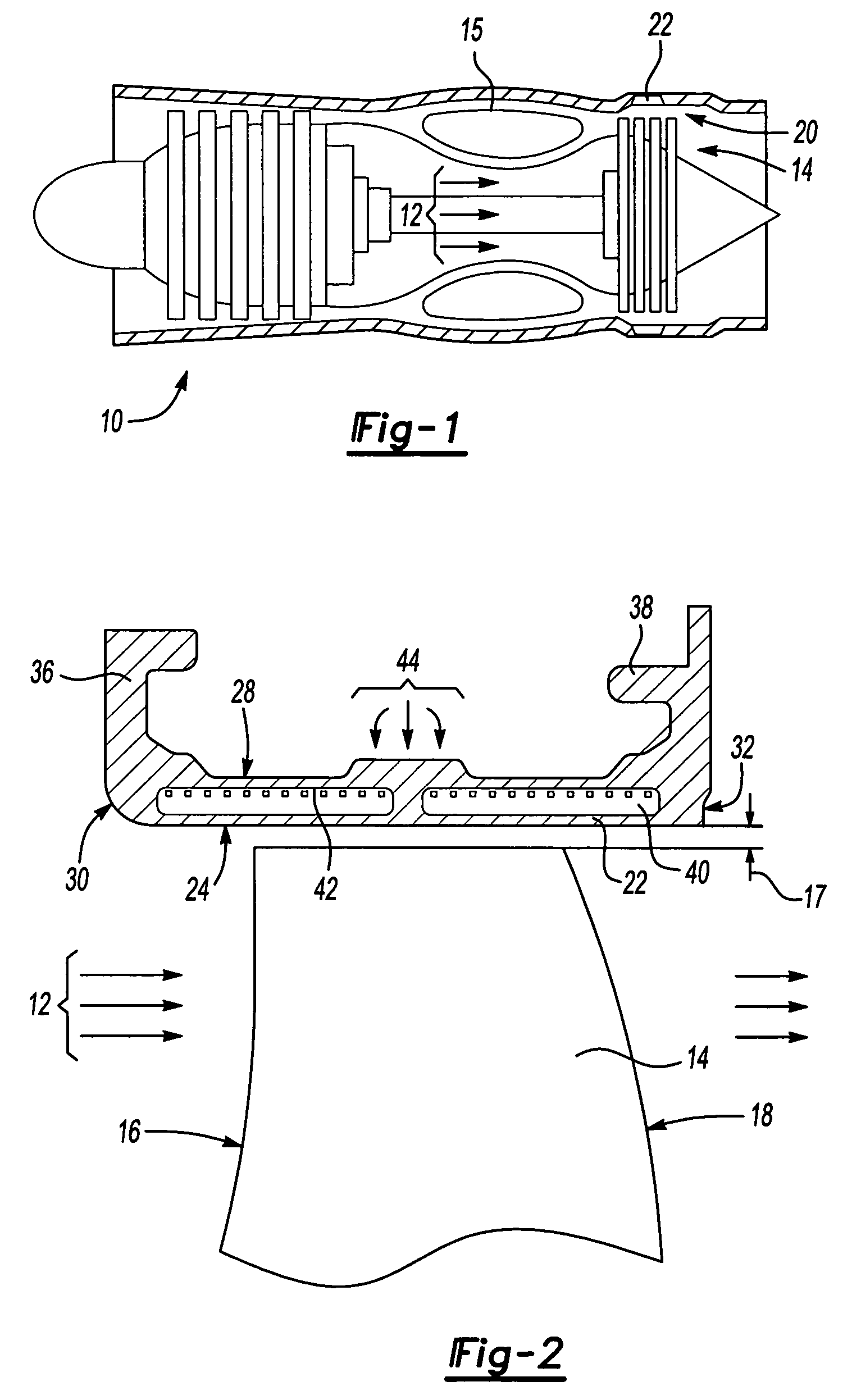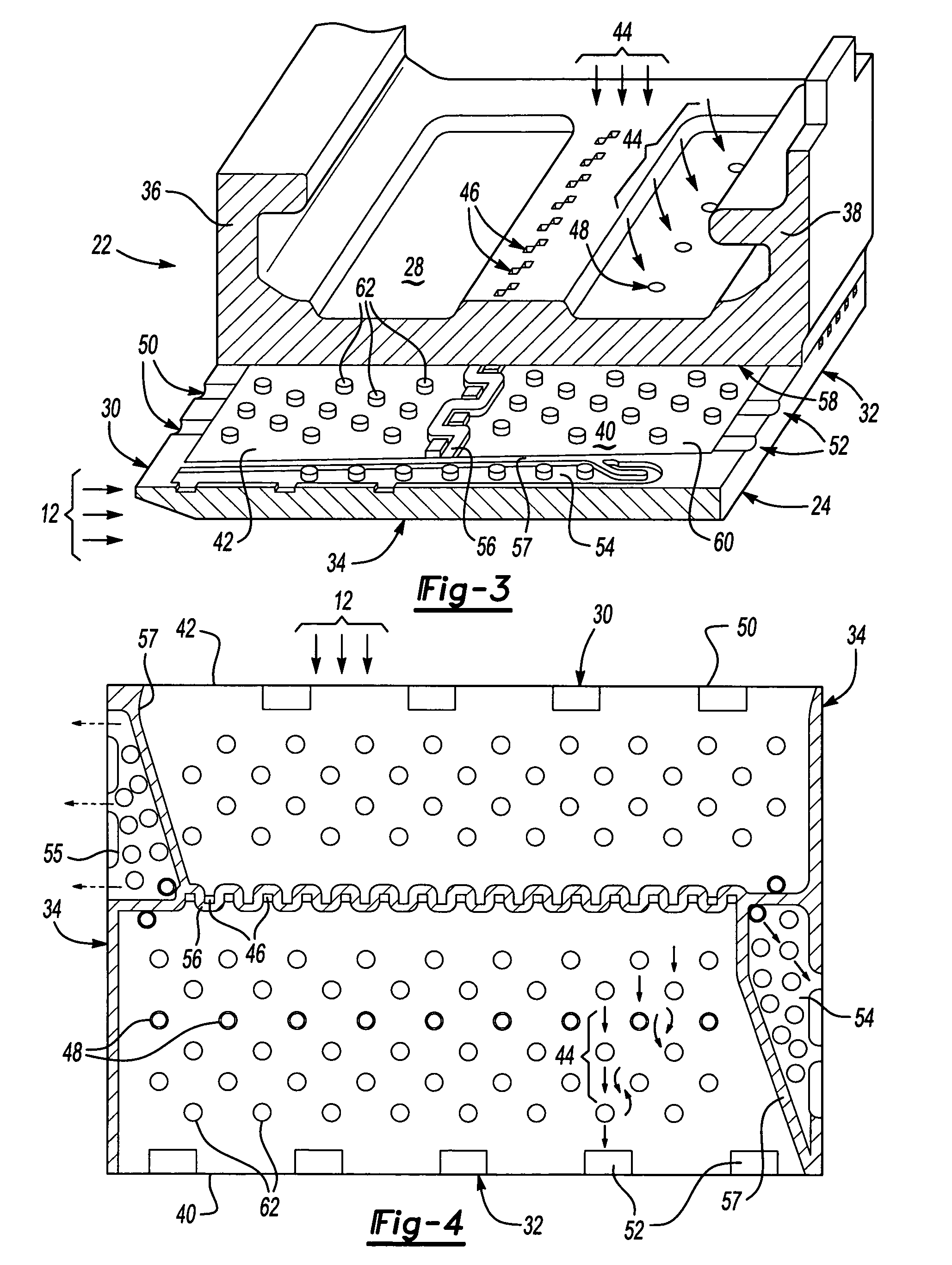Blade outer seal with micro axial flow cooling system
a cooling system and blade outer seal technology, applied in the direction of machines/engines, mechanical equipment, liquid fuel engines, etc., can solve the problems of reducing the amount of energy that can be utilized for the primary purpose of providing thrust, affecting the overall engine performance, increasing the temperature and more extreme operating conditions of those parts, etc., to achieve the effect of increasing the surface area and increasing the cooling capacity
- Summary
- Abstract
- Description
- Claims
- Application Information
AI Technical Summary
Benefits of technology
Problems solved by technology
Method used
Image
Examples
Embodiment Construction
[0026]Referring to FIGS. 1 and 2, a turbine engine assembly 10 is partially and schematically shown and includes a turbine blade 14 for transforming energy from a hot combustion gas flow 12 into mechanical energy. The turbine blade 14 is an airfoil having a leading edge 16 and a trailing edge 18. Gas flow 12 is directed toward the turbine blade 14 by an exhaust liner assembly 15 as is known. The turbine blade 14 includes a tip edge 19 that is spaced apart from an outer air seal assembly 20. The outer air seal assembly 20 is spaced apart a desired clearance 17 to minimize gas flow 12 between the blade tip edge 19 and the outer air seal assembly 20. The outer air seal assembly 20 includes a plurality of outer air seal segments 22.
[0027]Referring to FIG. 2 the outer air seal segment 22 includes a hot side 24 that is exposed to the gas flow 12, and a back side 28 that is exposed to a supply of cooling air flow 44. The outer air seal segment 22 includes a leading edge 30, a trailing edge...
PUM
 Login to View More
Login to View More Abstract
Description
Claims
Application Information
 Login to View More
Login to View More - R&D
- Intellectual Property
- Life Sciences
- Materials
- Tech Scout
- Unparalleled Data Quality
- Higher Quality Content
- 60% Fewer Hallucinations
Browse by: Latest US Patents, China's latest patents, Technical Efficacy Thesaurus, Application Domain, Technology Topic, Popular Technical Reports.
© 2025 PatSnap. All rights reserved.Legal|Privacy policy|Modern Slavery Act Transparency Statement|Sitemap|About US| Contact US: help@patsnap.com



